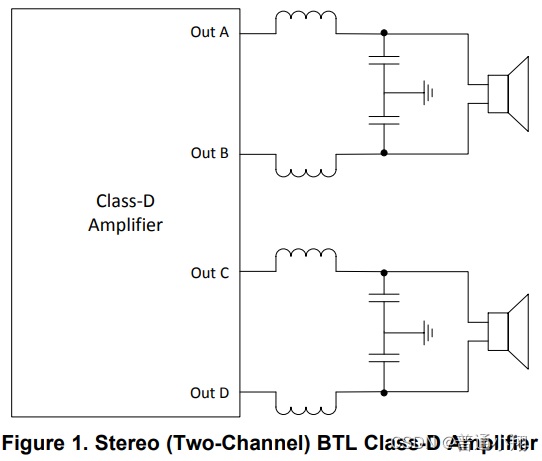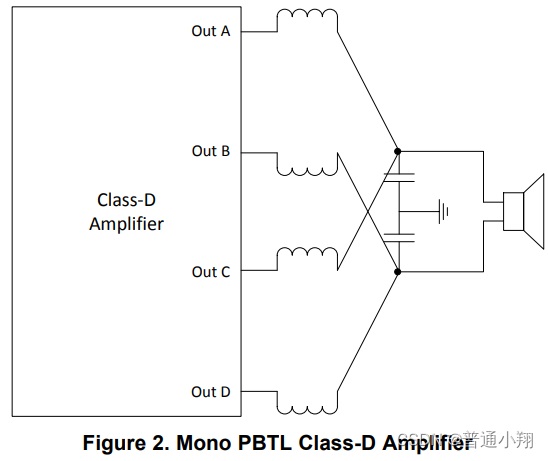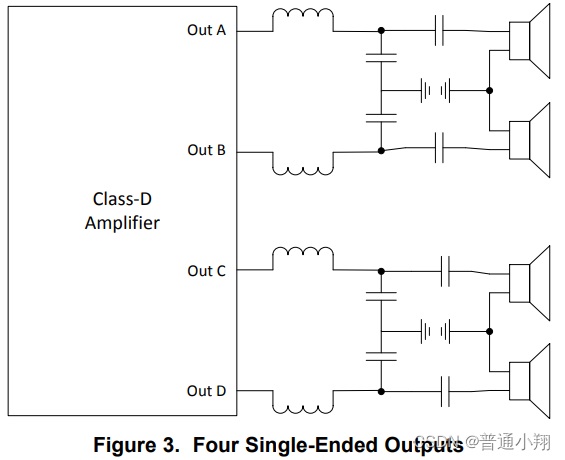This provides a high degree of flexibility for the final application. For example, a Class D amplifier with four half-bridges can drive four, two, or even just one channel. These topologies are known as single-ended (SE), bridged load (BTL), and parallel bridged load (PBTL). Bridging two outputs effectively doubles the voltage on the load, while configuring them in parallel doubles the maximum current of the power amplifier output. In theory, doubling the voltage and current should triple the power in PBTL mode, but because amplifiers have voltage and current limitations, operating in PBTL mode usually only allows higher power to be achieved at lower loads.
1. Bridge-tied load
Bridge-tied load (BTL) is the most common output configuration for Class D amplifiers. The BTL is configured with one amplifier driving one side of the load OutA and another amplifier getting the reverse signal OutB from the first amplifier driving the other side of the load. Compared with the single-ended (SE) voltage equivalent to double, power P = V*V/R, so the maximum power can be equivalent to 4 times the single-ended.
Since both ends of the load are connected to drivers, GND cannot be used as a reference. Therefore, the voltage on the load must be measured differentially relative to the ground.

Parallel bridging load (PBTL) is an output configuration that takes a stereo BTL amplifier and shunt the output into mono. The voltage at both ends of the load is the same for PBTL and BTL, but the maximum current has been increased due to the doubling of the current at each output load. Based on P = UI, PBTL power is twice that of BTL.

3 Single-Ended (SE)
Due to the PWM modulation of the Class D amplifier, there is a DC voltage of PVDD / 2 or half of the supply voltage after the LC filter. In SE mode, since the speaker is now ground-referenced, you need a DC blocking capacitor or some other way to reference the speaker to PVDD / 2 so that there is no DC voltage on the speaker.


免责声明: 本文章转自其它平台,并不代表本站观点及立场。若有侵权或异议,请联系我们删除。谢谢! Disclaimer: This article is reproduced from other platforms and does not represent the views or positions of this website. If there is any infringement or objection, please contact us to delete it. thank you! |


